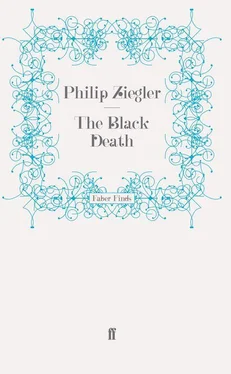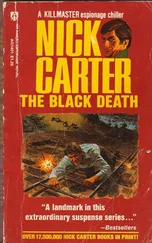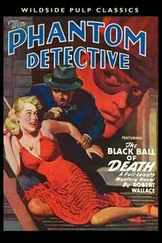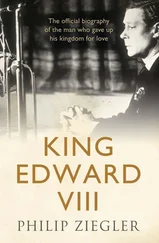In part this statement depends for its validity upon a comfortable foundation of ignorance. Very little is known about the Black Death in Wales and far less work has been done upon the evolution of the manorial system there than is the case with its English parent. No doubt a greater knowledge of the facts would suggest the need for important qualifications. But it is unlikely that the central proposition would be overthrown. The generalization so often made and so often disputed in the case of England – that the Black Death was directly responsible for the ending of the manorial system – can with greater confidence be applied to Wales.
But even here one is on shaky ground. For before the effects of the Black Death had fully worked themselves out, a cataclysm in some ways still more violent had fallen on Wales. The wars of independence of Owen Glendower, however noble or well-justified, set back the economic and social development of Wales by two hundred years. Through the thick clouds of hatred and bloodshed, through the appalling destruction and loss of life, it is difficult to see clearly what lay before and impossible to deduce how things would have developed but for the obliterating catastrophe. That the Black Death altered Wales is certain but the dimensions of the change can be no more than speculation.
And I, Brother John Clyn, of the Order of Friars Minor and of the convent of Kilkenny, wrote in this book those notable things which happened in my time, which I saw with my own eyes, or which I learned from people worthy of belief. And in case things which should be remembered perish with time and vanish from the memory of those who are to come after us, I, seeing so many evils and the whole world, as it were, placed within the grasp of the evil one, being myself as if among the dead, waiting for death to visit me, have put into writing truthfully all the things that I have heard. And, lest the writing should perish with the writer and the work fail with the labourer, I leave parchments to continue this work, if perchance any man survive and any of the race of Adam escape this pestilence and carry on the work which I have begun. {391}
John Clyn added two words to his peroration: magna karistia – ‘great dearth’, then he joined his fellows; another hand briefly added at some later date, ‘Here it seems that the author died.’
Even if no other evidence survived from Ireland, John Clyn’s cry would show how painfully the country must have suffered. He was a lonely, frightened man, who had already witnessed the death-agonies of almost all the other members of his house and now sought to record their end for posterity before the oblivion of death swept over all Kilkenny and all the country – even all the world. Whether anyone would live to read his words he did not know, hardly dared even wonder, but that instinct which leads men to seek to communicate with their unknown successors, whoever they might be and whatever they might be doing, now drove him on to write his chronicle, a memorial to the terror and grief of those who were still alive.
There is still much that is obscure about the course of the Black Death in Ireland. {392} We cannot even be sure from whence it came. The most likely source is Bristol which was then the main centre of Anglo-Irish trade, but it could well have come direct from Gascony or one of the ports of Brittany. More important and considerably more mysterious is the period of the epidemic. John Clyn was categoric. Referring to 1348 he said:
…in the months of September and October, bishops, prelates, priests, friars, noblemen and others, women as well as men, came in great numbers from every part of Ireland to the pilgrimage centre of That Molyngis. [Teach Molinge on the River Burrow. {393} ] So great were their numbers that on many days it was possible to see thousands of people flocking there; some through devotion but others (the majority indeed) through fear of the plague, which then was very prevalent. It began near Dublin at Howth and at Drogheda. These cities were almost entirely destroyed and emptied of inhabitants so that in Dublin alone, between the beginning of August and Christmas, 14,000 people died.
There is no more reason to take Clyn’s statistics seriously than those of any other chronicler but, equally, there is no reason to expect him to be seriously wrong over dates. On this basis, therefore, Ireland must have been infected within a month or two of England. On the whole a rather longer delay was to be expected but there is nothing wildly improbable in such a conclusion.
Yet in August 1349 Richard Fitzralph, Archbishop of Armagh, told the Pope during a visit to Avignon that the plague had destroyed two thirds of the English nation but had not yet done any conspicuous harm to the Irish or the Scots.
Such minor outbreaks as there had been were confined to the coastal areas. Fitzralph may have been a few weeks behind the times with his information but he went directly from Ireland to Avignon and would anyhow have kept closely in touch with affairs in his diocese. It took a minimum of fifteen or sixteen days to get from London to Avignon and an allowance of four weeks was not considered over-generous. From Dublin it would probably have taken a few days longer. But on any calculation the Archbishop must have been aware of any major calamity in Ireland which happened before the end of June. Even allowing for hyperbole on the part of John Clyn, it is incredible that the Archbishop should have dismissed as of minor importance an epidemic which could be described as having ‘almost entirely destroyed and emptied of inhabitants’ Howth, Drogheda and Dublin.
Other information supports Richard Fitzralph. The Archbishop of Dublin died on 14 July 1349, and the Bishop of Meath in the same month. If Fitzralph had left Ireland about the middle of July it is not at all surprising that he should not have had this news by the time of his audience with the Pope. But it is more surprising that both deaths should have occurred almost a year after John Clyn’s plague had ravaged Ireland. Further evidence from the Annals of Connacht for 1349 lead to the same conclusion. ‘A great plague in Moylurg’ these record ‘and all Ireland this year. Matha, son of Cathal O’Ruairc died of the plague. The Earl’s grandson died. Risdered O’Raigillig, King of East Brefne died.’ {394} Clyn may have expressed himself badly and meant that, though the first cases of the plague were recorded in 1348, the epidemic did not become serious until 1349, in particular the summer and autumn. For the want of a better explanation this will have to suffice. Certainly John Clyn can be excused a certain stylistic looseness given the circumstances in which he wrote.
Whatever the dates of the epidemic there is ample evidence of its disastrous impact. Even while Fitzralph was making his way to Avignon it was spreading out from the Pale on the east coast to the midlands and the west. John Clyn records that, of his own Friars Minor, twenty-five died in their house at Drogheda and twenty-three at Dublin. In July 1350 the Mayor and Bailiffs of Cork filed a petition pleading for the revision of certain taxes. Clonmel and New Ross also petitioned successfully for relief. The citizens of Dublin begged for a special allowance of a thousand quarters of corn. As late as 1354 the tenants of certain royal farms around the capital were claiming that they had been reduced to pauperdom by the ‘plague lately existing in the said country’, and because of ‘the excessive price of provisions’ which was exacted by certain royal officials. Geoffrey the Baker states that the Anglo-Irish were almost wiped out but the pure blooded Irish in the mountains remained inviolate till 1357. {395} This cannot be accepted but it is possible that comparatively little damage was done among the indigenous Irish and that these suffered more severely in another epidemic eight years later – perhaps of some quite different disease.
Читать дальше












